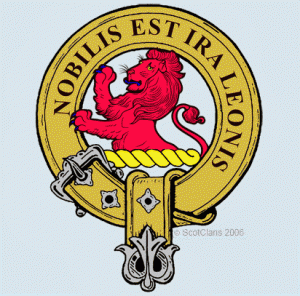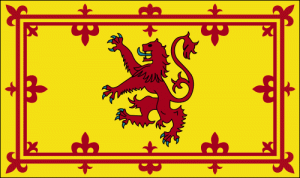The Lion and the Clans
Why is the image of a lion so prevalent in Scottish Clan heraldry? Why would a beast that was never native to Scotland feature so heavily?
 The image of the lion in art and culture dates back to pre history and cave paintings. Our ancient ancestors who’s story began in Africa would have admired these powerful beasts and they would become symbols of noble savagery. As society advanced the symbolism became stronger; In ancient Egypt the lioness was merged with the human to create the sphinx.
The image of the lion in art and culture dates back to pre history and cave paintings. Our ancient ancestors who’s story began in Africa would have admired these powerful beasts and they would become symbols of noble savagery. As society advanced the symbolism became stronger; In ancient Egypt the lioness was merged with the human to create the sphinx.
In almost every other culture the lion was also present. Hittites, Assyrians, Babylonians, Persian and many early islamic cultures. Its not hard to understand, after all the lioness is a dedicated mother and ruthless hunter, the male lion a majestic animal that defends his pride with fury. a good role model for early civilisations.
The lion probably entered early Christian culture via a manuscript called the ‘Physiologus’. This document probably dates back to around the 2nd century AD and consists of a number of descriptions of animals and birds as characters in a series of moral tales. In the opening story a lioness gives birth to stillborn cubs but the lioness brings them to life by breathing upon them, this and other similar stories are a direct reference to the idea of Christ’s resurrection and the redemption of man. The Physiologicus also gives us the story of the Pelican wounding herself to feed her young, an image that can be seen on the Stewart crest.
In the middle ages the manuscript was translated into latin and spread through central Europe and was adapted into several ‘Bestiaries’ With such strong links to these moral tales such animals would naturally form the cornerstone of heraldic symbolism where they would become like ‘moral flash cards’.
 Such tales established the idea of the lion as the ‘king of the beasts’ and so its understandable that heraldic art would take on this concept of using the lion as a symbol of the ruling elite. This symbol entered Scottish heraldry with King William I. Known as William the Lion this tag did not come from his appearance of character but simply from his adoption of the lion as part of his own standard. His successor Alexander II took the same red lion rampant on a yellow ground and made this the royal symbol that would become the well known Royal Standard of Scotland.
Such tales established the idea of the lion as the ‘king of the beasts’ and so its understandable that heraldic art would take on this concept of using the lion as a symbol of the ruling elite. This symbol entered Scottish heraldry with King William I. Known as William the Lion this tag did not come from his appearance of character but simply from his adoption of the lion as part of his own standard. His successor Alexander II took the same red lion rampant on a yellow ground and made this the royal symbol that would become the well known Royal Standard of Scotland.
I have used the phrase ‘rampant’ above. this refers to the attitude that the animal adopts, in this case raised up on hind legs and paws raised to strike (the lion can stand on either one or two legs depending on tradition although in British heraldry it tends to be one with the other also poised to strike). There are many other attitudes that animals such as lions, wildcats etc can assume; ‘Passant’ is walking with one fore paw raised, ‘Statant’ is standing with all paws on the ground, ‘Salient’ is leaping, ‘Sejant’ means in a sitting position and so on. Other phrases you may hear are ‘Guardant’ or ‘Affrontee’, where the animal faces the viewer and ‘Regardant’ where the animal looks to its rear.
With such strong links to Scottish royalty its no surprise that the Scots nobility would incorporate the lion into their own arms, some such as MacGregor make no secret of this with a lions head and the motto which translates as ‘Regal is my Race’. Here are the clans and Scottish armigerous families we know of that use the lion symbol in their crests.
Baxter (A Lion Passant)
Broun (Rampant)
Bruce (Statant)
Chalmers (Head and Neck)
Cumming (Rampant)
Dundas (Head, Guardant)
Fairlie (Head Couped)
Farquharson (Rampant)
Heron (Demi Lion Rampant)
Home / Hume (Head)
Inglis (Demi Lion Rampant)
Little (Demi Lion Rampant)
Lundin (Demi Lion Rampant)
MacDowall (Lion’s Paw)
MacDuff (Rampant)
MacGregor (Head)
MacLaren (Head)
MacPhee (Demi Lion Rampant)
Maitland (Sejant, Affrontee)
Middleton (Demi Lion Rampant)
Moncrieffe (Demi Lion Rampant)
Moubray (Demi Lion Rampant)
Newton (Demi Lion Rampant)
Nicolson (Demi Lion Rampant)
Pentland (Head)
Primrose (Demi Lion Rampant)
Stuart of Bute (Demi Lion Rampant)
Vans (Rampant)
Young (Demi Lion Rampant)
Its easy to be confused about how an animal native to Africa could have such a profound symbolic influence in Europe, we should also remember that lions though not native or wild would have been brought over with invading Romans who would have kept the creatures for games or even as status symbols. Personally though I prefer to believe that it was not these poor caged beasts that influence the heralds of early mediaeval Europe but the lion tales of old that were seen as symbols of the ancient code of chivalry.
Tagged











thank you for your interpretation of the coat of arms of Scotland. What do you think the significance of tréchoir fleurdelisé around the rampant lion ?
Redien, its claimed that the ‘royal tressure’ represents the ‘auld alliance’ with France but the dates don’t match up s possibly it was merely a way to difference the arms from other royal lions.